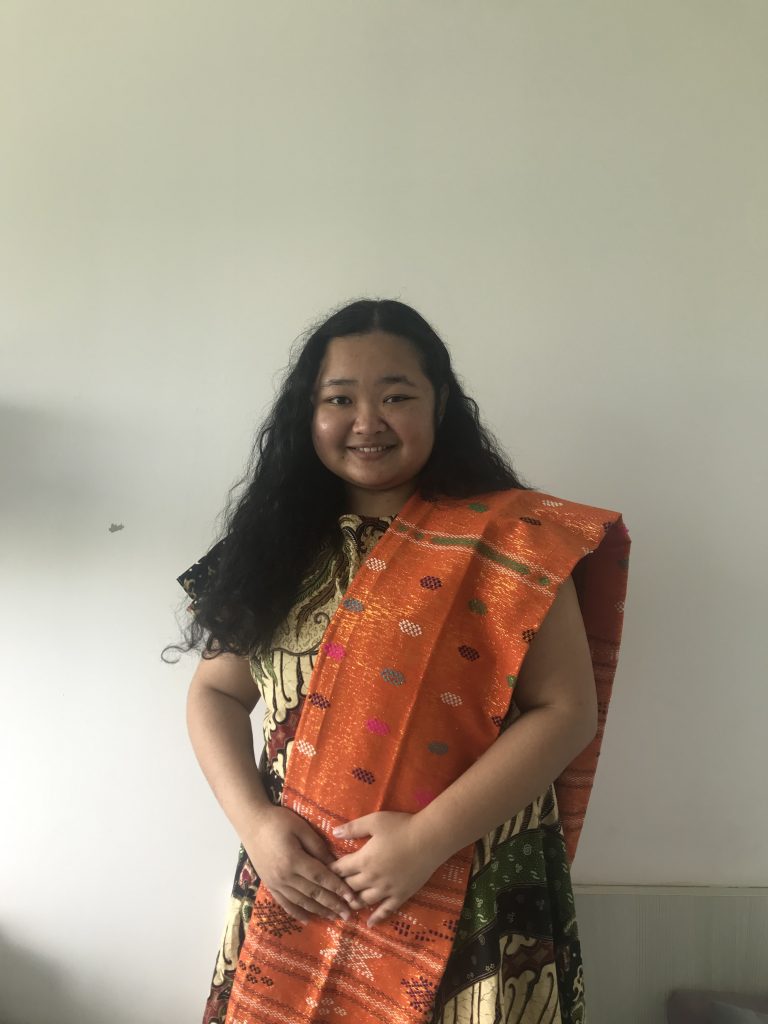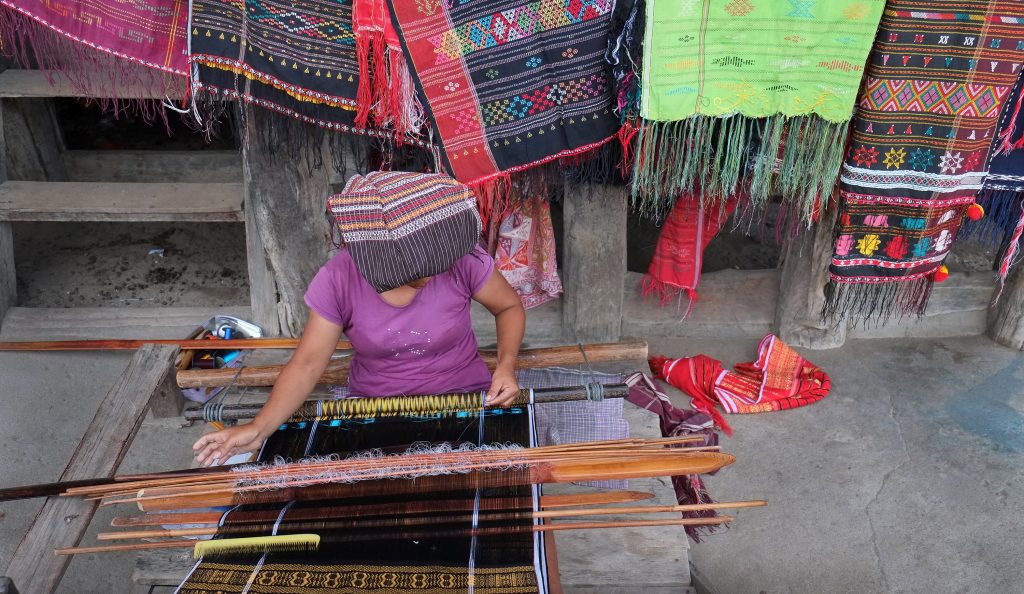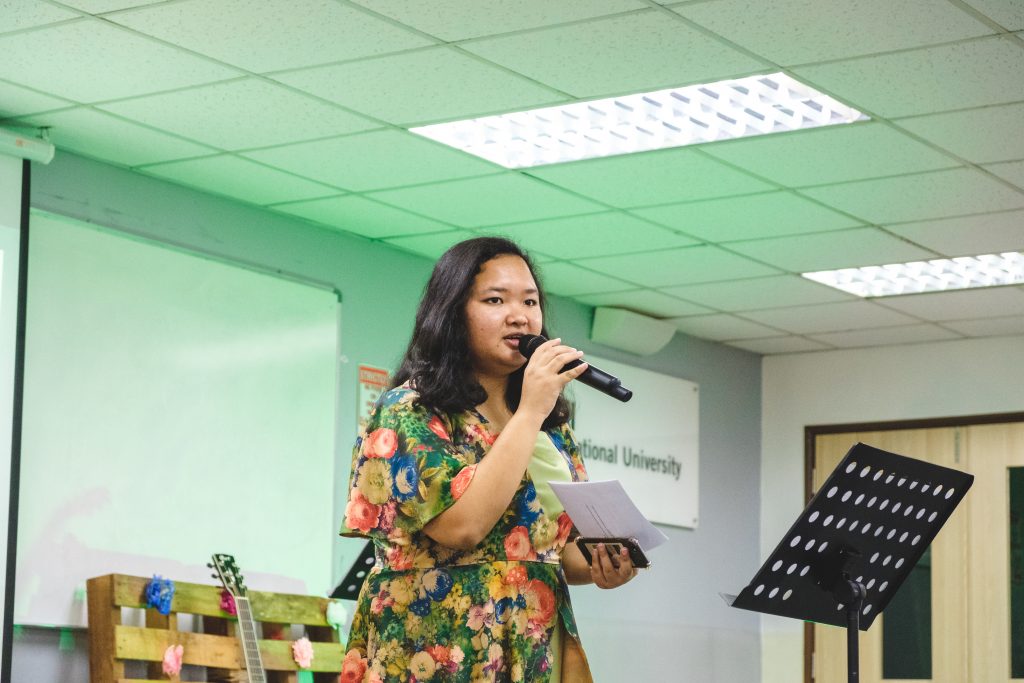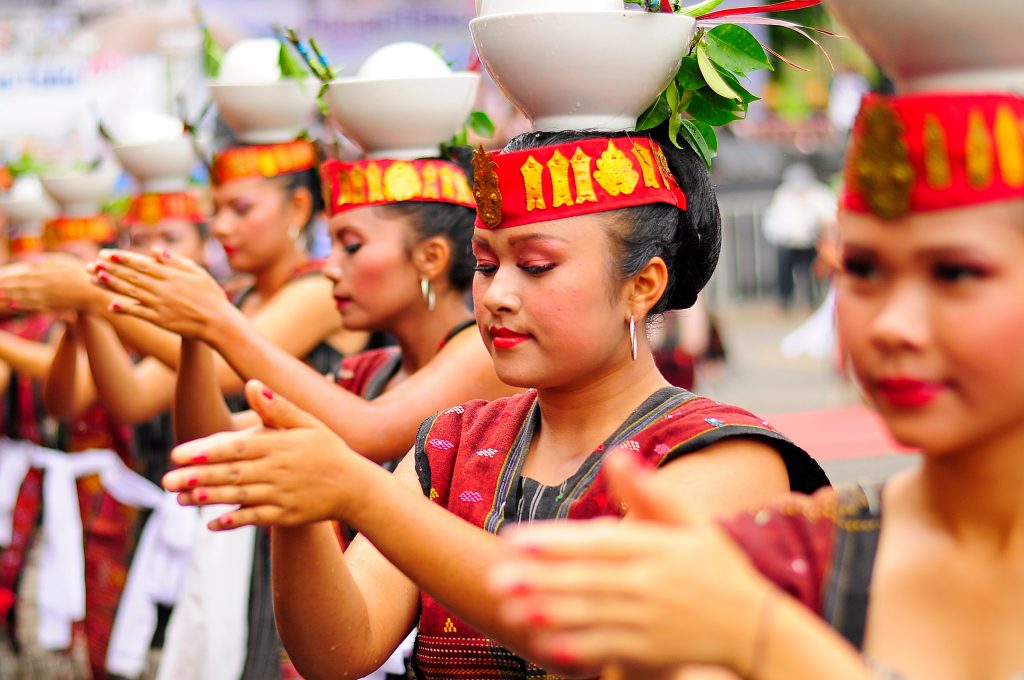Every year, the world observes the International Day of the World’s Indigenous People (IDWIP) on August 9 to raise awareness on the 370 million indigenous people living across the globe. In line with IDWIP’s objectives, Putri Yosivia Noveriama Hutagalung, an INTI International University student of Batak ethnicity, has decided to talk about her experiences as an indigenous Indonesian and share the uniqueness of her ethnicity, culture, and traditions to increase her community’s visibility.

Putri, decked in her ulos, which was given to her at birth and is a traditional cloth representative of Batak people
What’s in my name?
When asked about the significance behind her name, Putri shared that it was the brainchild of both her father and her paternal grandfather.
“My third name Noveriama, is a combination of the words November, which is the month I was born in, and the word riama, which is Batak for happy. This was a name that they creatively came up with on their own, and I love how unique it is and how much thought was put into it,” she said.
When talking about her last name, Putri explained that it carries the biggest cultural significance of all her names.
“In Batak culture, we take on the last names of our male ancestors. As means of cultural preservation and continuation too, penning down our family trees is huge in Batak culture. This practice helps us familiarise ourselves with other Batak families even if we have not met them.
“Since there are over 300 ethnic groups in Indonesia, our last names help us easily identify a fellow Batak person and it also helps us better understand the ancestral lineage they come from,” she explained.
Seen beaming with pride as she continued explaining, Putri shared that her last name, Hutagalung, for instance, is the name of her paternal male ancestor who lived seventeen generations before her and who also happened to be the son of a royal king in Northern Sumatra.
Apart from being a representation of Batak people, Putri explained that a Batak person’s last name also influences their community’s culture and practices to an extent too.
“We have do’s and don’ts based on our last names. For instance, if I were to marry a Batak man in the future, I cannot marry a Batak man who shares the same last name as my aunt’s husband. I think this rule was created to mainly avoid incestuous relationships and marriages within the community,” said Putri.
Batak women performing the tortor sawan, which is a cultural dance in the Batak community that is also held during annual family gatherings as explained by Putri. Each of the women have a casan on their heads, which is a bowl filled with water, betel leaf, lime and uncooked rice. The tortor sawan was traditionally performed to give strength to the king and to chase away evil spirits
She added, “Our last names also influence how we interact with other Bataks when we are together.”
In her intention of explaining this further, Putri shared that as part of her people’s culture, Bataks organise annual gatherings, in which they meet up to celebrate, feast and dance in merriment with all of their extended relatives who share the same last name.
“For example, since I share the same last name as my father, I attend the Hutagalung family annual celebration, which is a different celebration to my mother’s side of the family, whose last name is Saragi. Even though I do not share the same last name as them, I attend the Saragi annual family reunion too, but here is where our interactions slightly differ,” she continued.
The Bachelor of Information Technology student expressed that when attending the Hutagalung annual celebration, the daughters and son in laws of Hutagalung would take on the responsibilities of host and serve food to the Hutagalung parents in a Hutagalung family reunion.
“Whereas, when I go over to my maternal family’s annual celebration who is of the Saragi family, my future husband (or Saragi son in laws) do not have to take on the responsibility of host. The daughters of Saragi would still serve the parents,” she said.
Putri believes that this cultural practice was cultivated as means of rejoicing and respecting the elders in the Batak community.

A Batak woman using a contraption known as anian, which is used to weave an ulos in Indonesia.
This is me
On other cultural uniqueness of her indigenous community, Putri shared that the ulos, the traditional cloth for Batak people, is an important representation of her people that is deeply regarded and revered in her culture.
“As Bataks, we believe that the ulos are physical manifestations of a Batak person’s prayer for another. It is a very sacred cloth to us and one that is commonly used on special occasions.
“A Batak person will typically receive an ulos at the point of birth, when they get married and when they pass on. For each of these ceremonies, the ulos given will vary too, with noticeable differences in its thickness, colours and textures,” explained Putri.
She further added that depending on the person’s gender, the colours of the ulos will vary too with the colour of a man’s ulos usually taking on a darker tone while the colour of a woman’s ulos usually taking on a lighter tone.
“I think it is done this way because we believe that the ulos is a physical representation of masculine and feminine energies as well,” explained Putri.
On the topic of languages, Putri shared that just as how other languages have either disappeared or evolved with the times, the Batak language has evolved from generations ago too.
“We used to have our own Batak characters, but after centuries, the Batak characters were replaced with romanised words,” said the endearing student with a slightly grimmer tone.
Despite the change, Putri shared that she definitely has some favourite words that originate from her indigenous language.
“I personally love the word boru panggoaran, which is Batak for first born daughter. I have a strong positive attachment to the word because when I was a child, my father would always sing boru panggoaran songs to me whenever I needed a hug or whenever he needed to comfort me as I was crying,” shared a moved Putri.
“Boru panggoaran also carries a lot of weight in my culture because as firstborns, we are expected to be good, kind, respectful, and be a good role model to our siblings, since we are considered to be the closest reflection of our parents. The title is deeply respected in my culture because we recognise the responsibilities that comes with it,” she continued.
Putri went on to share that her second favourite word in the Batak language is hasian, which means beloved. She shared that it is an endearing term that is commonly used in her culture and added that her father frequently uses it when interacting with her and her younger sibling too.
Oh, so yum
When talking about cultures, one cannot stray away from the conversation about food. Putri shared that in the Batak indigenous community, there are some mouth-watering dishes to rave about too.
She explained that there are dishes such as the arsik and daun ubi tumbuk that can be easily accessible and shared with others if they are keen on learning more about the Batak culture through food.
“Arsik is a dish consisting of ginger fried fish, while daun ubi tumbuk are crushed daun ubi cooked together with santan, or coconut milk,” explained an excited sounding Putri this time.

Putri Yosivia Noveriama Hutagalung, who is pursuing the Bachelor of Information Technology programme at INTI International University, is of Batak heritage, which is one of the major ethnic indigenous groups in Indonesia
Let’s talk about us
While Batak people are recognised and respected in Indonesia, she realised that a lot of people are also unaware of her ethnic group in neighbouring countries such as Malaysia or Brunei, where she has spent a considerable amount of years living in.
“It is understandable that my ethnicity is unfamiliar in other countries since there are hundreds of ethnic groups in Indonesia. But, based on my experiences, I am automatically assumed to be either Filipino, Malay or Chinese at first, so the topic of me being an Indonesian and then being a Batak only comes in much later in conversations and is usually held with people I have formed a closer bond with,” explained the 22-year-old.
Being an Indonesian international student who has lived both in Brunei and Malaysia, she shared that her experiences have not been all pleasant.
“I hear the word “Indon” being used a lot in both Malaysia and Brunei, and it is usually used in a hurtful, patronising or condescending manner.
“As an Indonesian person of Batak ethnicity, it is extremely disheartening to hear this, because I cannot imagine what people would say once they hear I am an indigenous Indonesian,” expressed the 22-year-old.
Putri shared that she has tried on numerous occasions to explain why it is hurtful, but she said that it is hard to reason out with people who are unwilling to meet her halfway and see where she comes from. However, she has also met people who are willing to hear her out, and for them, she remains grateful.
On her plans for August 9 this year, particularly in the midst of the pandemic, Putri shared that she might challenge herself to speak only in the Batak language with her family all day and potentially cover a song in the Batak language to post up on her Instagram. She shared that she may even consider sharing her ulos with her friends if the physical restrictions eases up by then.
“Apart from creating conversations and awareness about indigenous communities and people, I also want to challenge myself by connecting to my roots through my language. I regret not learning it as much when I was a child,” she expressed.
When asked about her August 9 message to the world, Putri shared that she wanted to encourage everyone to read up more and stay informed about the different ethnic groups in their own country.
“There really is true beauty in diversity,” she concluded.
https://www.amnesty.org/en/what-we-do/indigenous-peoples/
